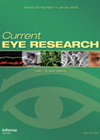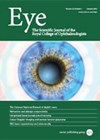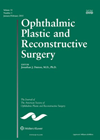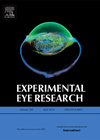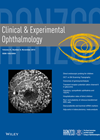You searched for "choroideal"
Macular pigment in relatives of AMD patients
3 April 2024
| Kurt Spiteri Cornish
|
EYE - Vitreo-Retinal
Blue light causes photo-oxidative retinal injury and macular pigment (MP), with lutein, zeaxanthin and mesozeaxanthin as the main components, as a filter that protects the macula from this damage. Previous studies indicated that low levels of macular pigment optical density...
In conversation with Professor Usha Chakravarthy (2018)
1 March 2019
|
EYE - Vitreo-Retinal, EYE - General
Professor Chakravarthy popped by the Eye News stand at the 2018 Royal College of Ophthalmologists Annual Congress after her excellent Bowman Lecture. She gave us a summary of her presentation, which looked at how our understanding of AMD has changed...
Moorfields cataract, medical retina and disc assessment
31 March 2025
The Cataract/medical retina/ disc assessment short course has been designed to meet the training needs of band 6’s and 7s who wish to develop their knowledge and skills in disease recognition, management and intervention of cataract, medical retina and disc...
NEOS (North Of England Ophthalmological Society) Spring Meeting 2024
23 April 2024
by Matthew Hartley, Trainee, Northern Deanery, UK. In NEOS’ 110th year, the spring meeting was held in Doncaster and centred around ocular oncology and vitreoretinal surgery. The meeting hosts, Umi Harley and Steve Winder from Royal Hallamshire Hospital, arranged a...
Vision loss during Eylea treatment for AMD
1 December 2017
| Saruban Pasu
|
EYE - Vitreo-Retinal
This report investigated patients who lost more than two lines of vision despite periodic injections of aflibercept and explored the factors associated with vision loss. One hundred and ninety-six eyes were included in this study over a two year period....
Finasteride and central serous chorioretinopathy
1 June 2017
| Sofia Rokerya
|
EYE - Vitreo-Retinal
The pathophysiology of central serous chorioretinopathy (CSC) is complex and has not been fully elucidated. Suggested theories include hyperpermeability and increased hydrostatic pressure in the choroidal vasculature, which creates RPE detachments overwhelming the RPE barrier function, leading to accumulation of...
Paediatric uveitis in India
1 October 2016
| Saruban Pasu
|
EYE - Vitreo-Retinal
This article was a retrospective review of paediatric patients presenting to a tertiary hospital in India. Records over a three year period were reviewed. The authors highlight that children account for about 2.2-13.8% of uveitis patients and are at greater...
The dynamic nature of orbital cavernous haemangiomas
This paper seeks to address the question of how much do orbital cavernous haemangiomas actually change over time, and if there are any identifiable factors which can predict which lesions will grow and which will remain stable. In particular, if...Cataract surgery in patients being treated for neovascular AMD
This retrospective matched case control study evaluated outcomes and predictive factors of visual acuity (VA) change after cataract surgery in patients being treated for neovascular age related macular degeneration (nAMD). They compared 124 patients that had cataract surgery with 372...CD40L activation of human RPE cells
1 August 2018
| Graham Wallace
|
EYE - Vitreo-Retinal
Age-related macular degeneration (AMD) is the leading cause of reduced visual acuity in the elderly worldwide. The risk factors involved in AMD include smoking and diet, while genetics have been shown to have a significant role. Recently a link between...
Mitomycin C versus 5-FU as an adjunctive treatment for trabeculectomy
1 February 2014
| Anjali Gupta
|
EYE - Glaucoma
Antifibrotic agents are used during trabeculectomy (TRAB) to improve long-term surgical success by reducing fibrosis of subconjunctival and episcleral tissue. The purpose of this meta-analysis was to directly compare the efficacy and safety of the two most frequently used antifibrotic...

